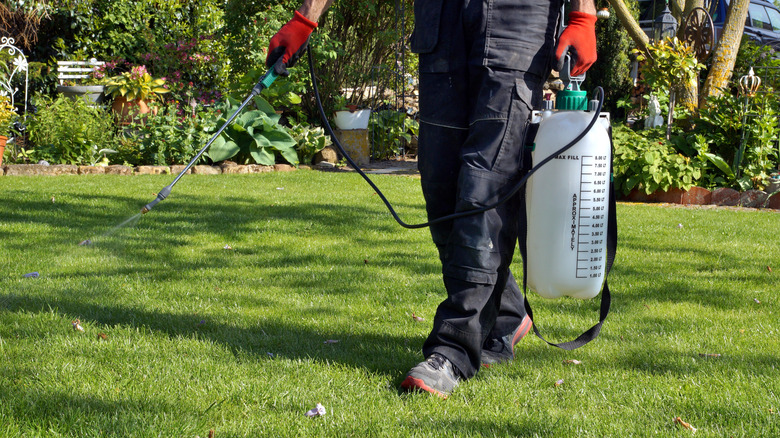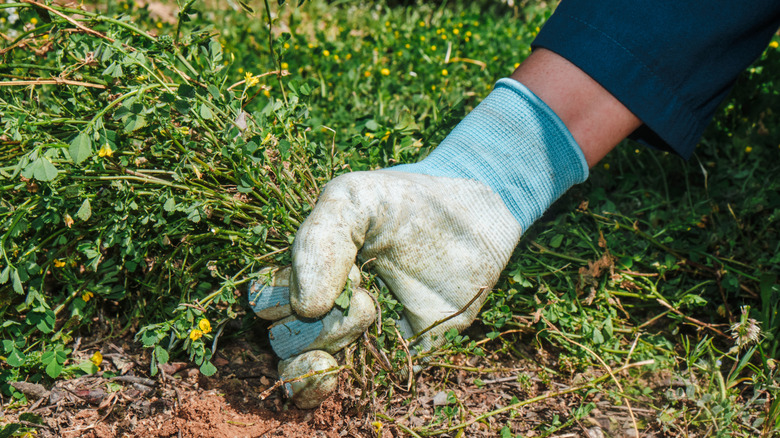Farewell To Weeds: Here's Your Last Chance To Get Rid Of Them
Keeping weeds out of your yard often seems like a constant battle. Whether you're trying to stop them from growing in the first place or getting rid of fully grown varieties, it always seems like there's weed fighting to be done. However, with the arrival of fall, you may actually be running out of opportunities to control your weed problem. Many herbicide sprays work best in temperatures between 65 and 85 degrees, so as temperatures begin to fall, their effectiveness decreases. As a result, your last chance to get rid of your weeds until spring rolls around again is usually before the first frost.
Just like weather conditions can affect how easy it is to pull weeds, they can also impact how well weed sprays work. With many formulas, the weeds must be actively growing for them to be killed. However, like the desired plants in your yard, weeds enter their dormant stage when temperatures drop below a certain point, making them much more difficult to kill.
Spray weeds before temperatures fall below 50 degrees
Among the common weeding mistakes that many home gardeners make, failing to understand how their weed-killing spray works is one of the most costly. That's because you're only wasting the spray if you're applying it at a time when it won't be as effective. Post-emergent herbicides are formulated to work on weeds that have already germinated. When applied to the plants, they work their way down to the root system through the stalk, effectively killing the weed. If a weed isn't actively growing, the spray won't be absorbed and the plant will survive.
Since cooler temperatures are the enemy of herbicides, your last chance to spray those pesky weeds in your yard is when the temperatures fall below approximately 50 degrees Fahrenheit. In particular, you'll want to spray before daytime temperatures drop below 55 degrees Fahrenheit, and nighttime temperatures are less than 40 degrees Fahrenheit.
What to do if you spray weeds too late
If you've waited too long to spray your weeds, all hope isn't lost. There are plenty of great strategies for removing weeds that don't involve herbicides. Hand-pulling is a tried-and-true method for removing weeds in colder weather when sprays are ineffective. However, it is crucial that you remove the entire plant, including the root system. If you only remove the above-ground portion, the weed will return. It often helps to loosen the soil around the plant before you begin, so the root is easier to extract. Tools like a trowel, a hand weeder, or a shovel also allow you to work more efficiently.
In addition to manual removal, mowing your lawn can also help control weeds in the cooler weather. While it won't kill the weeds, it does help prevent the spread of their seeds. You should raise your mower height, though. Cutting your grass a little longer helps block sunlight from reaching weed seeds and allowing them to germinate.


